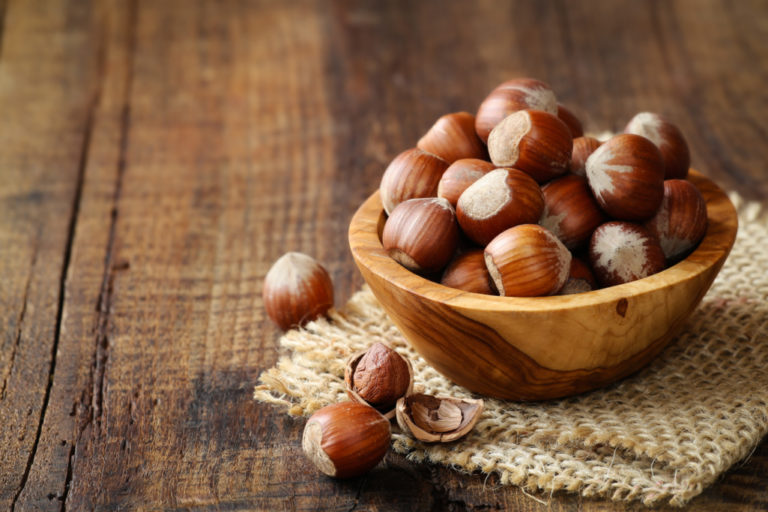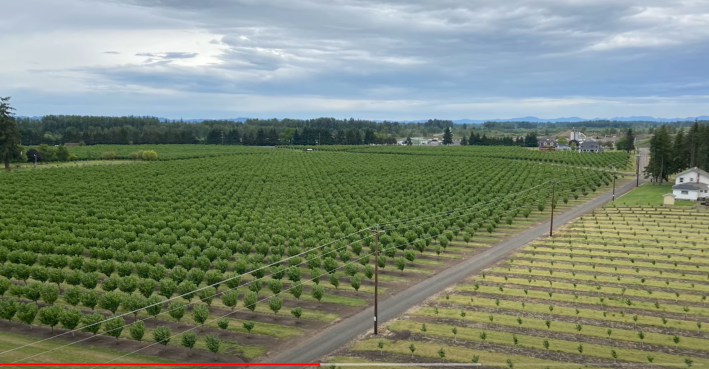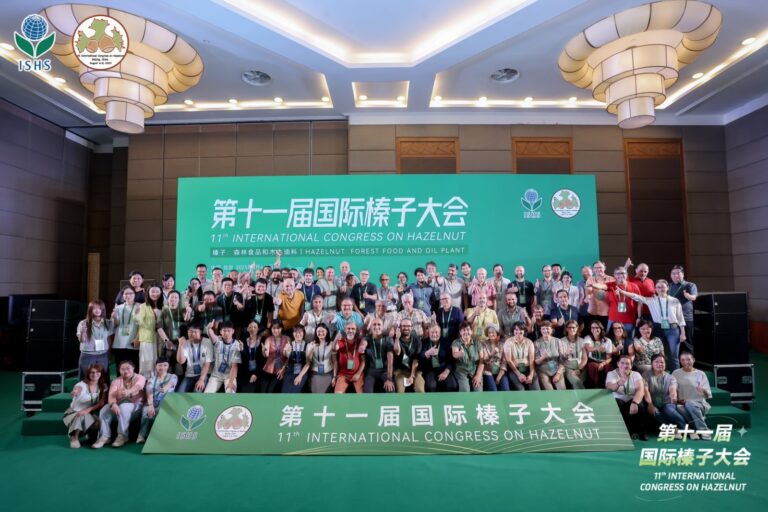Researchers focus on helping hazelnut boom
Currently there are nearly 30,000 acres of the older hazelnut cultivars in the valley and about 40,000 acres of new trees.
Hazelnuts are the most important orchard crop in Oregon’s Willamette Valley, where nearly the entire U.S. crop is produced.
It is also known for the innovative cultivars developed at Oregon State University that are resistant to eastern filbert blight, a fungal disease that has decimated traditional hazelnut cultivars, including Barcelona and Ennis.
Across the valley farmers have been putting in an average of 5,000 acres of new orchards each winter over the past five years, with 7,000-8,000 acres going in last year. Currently there are nearly 30,000 acres of the older cultivars in the Valley and about 40,000 acres in new trees for a rough total of 70,000 acres.
However, these new orchards are also attracting new problems, said Nik Wiman, orchard crops specialist at OSU’s North Willamette Research and Extension Center in Aurora, Ore.
Among them is the black headed borer. Seen since the dry summer of 2015, it seems to target new orchards.
“They key in on stress signals the trees give off and have been fairly devastating in some of the new plantings,” Wiman said. “It is difficult to observe the borer’s life cycle because most of it is spent inside the tree.”
As growers pruned infested wood, Wiman and colleagues gathered the sticks to follow the borer’s emergence pattern in the lab. This gave them a good idea of when they’re flying in the field.
Attacking developing and mature nuts is the difficult-to-manage brown marmorated stink bug (Halyomorpha Halys), a worldwide problem first found in Oregon in 2002. Its first impacts on hazelnuts were identified in 2012.
“Our main strategy has been with the parasitic Samurai wasp, a tiny wasp that attacks BMSB eggs,” Wiman said. “Although Oregon has 30 native stink bugs, the BMSB is an Asian import.”
Samurai wasps attack 80 percent of the BMSB eggs and keep the pest in check.
“Our original plan was to petition the government to allow us to acquire and make releases of it, then it showed up here on its own in 2016 and they allowed us to redistribute it.”
Stink bugs reared in the lab are fed to the wasps to increase their population. Wasps are then released in orchards in batches of 40.
“Oregon’s native stink bugs have different wasps specialized to attack their eggs,” Wiman said. “However, the BMSB possesses a defense that native parasitoids can’t overcome.”
Wiman is excited about an innovation he developed with grower Jeff Newton of Christianson Farms in Amity to better map the yield of hazelnut orchards during harvest.
“We cut up a cart and fitted the four corners with load cells and developed a device that integrates the weight from that scale with GPS,” Wiman said. “It’s just tremendous and as far as I know nobody has done it in hazelnuts. We can map out these fields and overlay a soil map and see how the soil affected yield or for our trial work in fertilizers.
“It was the first year and we can make a couple of improvements, but I think we really have something.”
Yet another study follows the movement of nutrients through the new cultivars. Researchers are learning that some of these trees differ widely in how nutrients move through the plant tissues — and that they may have different nutritional requirements altogether.
“Our growers get a lot of advertising directed their way for foliar nutrition products,” Wiman said. “Usually there’s a grain of truth behind what these products will do, but in most cases they haven’t necessarily been proven to do much. We’re trying to get at what the tree actually requires and how the timing of these products may play into that.”
A further study seeks to establish best practices in irrigating hazelnut orchards.
“We’re doing a lot of stuff and to me it’s all innovative,” Wiman said.
Copyright: capitalpress.com






